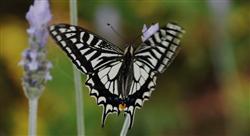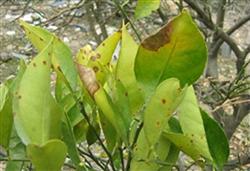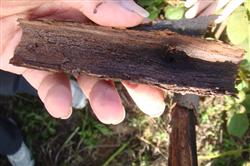What is citrus butterfly?

What is Citrus Papilio? How does orange butterfly grow, what harm does it have? Is there any way to control citrus butterflies? Also ask experienced netizens to help introduce The growth habits and hazards of citrus papilio and control methods are listed below for netizens 'reference. Citrus Papilio growth habits: Orange Papilio, also known as orange yellow Papilio, generally has two types in spring and summer. The female adults of spring type are 21~28 mm in length and 75~96 mm in wing span, while those of summer type are larger, 30 mm in length and 105 mm in wing span, yellow in body and wing base, and less black than those of spring type. There are 8 crescent macula on the front wing and 6 on the rear wing of spring-summer adults. Larvae early brown, mature green, body length 38~42 mm, head has yellow odor horn glands, when surprised to extend. Orange Papilio adults are active during the day, good at flying, like to eat nectar, eggs are scattered on the buds and leaves, egg period is about 7 days. The newly hatched larvae bite the leaves into holes or gaps. The fifth instar larvae eat the most, eating 5 or 6 leaves a day. When they are frightened, they extend the smelly horn glands and emit odor to avoid enemies. The mature larvae can spin silk around their abdomen to fix the branches and pupate. The overwintering generation adults appeared from March to April, and the first to fifth generation adults appeared from late April to May, late May to June, late June to July, August to September and October to November respectively. Orange Papilio harm: Generally, larvae nibble citrus buds and leaves, and the first instar larvae eat notches and holes. The fifth instar larvae can eat up citrus seedling leaves, leaving only petioles. Citrus, citrus, phellodendron amurense, evodia rutaecarpa and zanthoxylum bungeanum will be seriously damaged by citrus papilio larvae. Orange Papilio control methods: Method 1: Artificial killing: Combine winter and spring pruning to kill overwintering pupae; net capture adults; catch larvae; remove eggs. Method 2: Use natural enemies to control: Trichogramma, Pteromalus chrysoides and Hyphactylus macrolegatus are natural enemies of Papilionidae. They can be controlled by laying Trichogramma eggs in the field or reducing the application of drugs. Method 3: Spray larvae with chemicals: 90% trichlorfon crystal 800 times solution, or 2.5% trichlorfon kill, 20% mefenacil 4 000~5 000 times solution, or 2.5% baode 2 000 times solution, or 10.8% caesar 1 000~1 500 times solution, or Bt emulsion 2 000~3 000 times solution, Qingchong wet powder (10 billion/g)1 000 times solution, Qingchong 6 1 500 times solution were sprayed at the peak stage of larvae. Click for more citrus growing techniques Click for more fruit growing techniques
- Prev

How do citrus seedlings control anthrax?
What is the harm of citrus anthracnose? How do citrus seedlings control anthrax? Hope experienced netizens help introduce planting net collated citrus seedling anthracnose harm and prevention methods, listed below for netizens reference. Citrus seedlings anthracnose harm: anthracnose is a common disease in citrus cultivation...
- Next

How to prevent and cure kiwifruit canker?
What harm does kiwifruit canker have? How to prevent and cure kiwifruit canker? There are no netizens who have any knowledge to help introduce that kiwifruit canker is a bacterial disease, which is concealed, explosive and destructive. It is impossible to judge whether there is the disease before the appearance of the symptoms and the damage caused by the symptoms.
Related
- Moge, come on! The staff of the peasant association in the producing area of cantaloupe were frightened when the crowd gathered.
- Causes and Solutions of low Fruit setting rate of Apple
- Symptoms and control measures of passion fruit virus disease
- Fruit growing lesson: how do apple orchards keep high yields?
- Can you build orchards in the mountains? What are the pros and cons?
- How to manage the coloring period of Crisson grape?
- This paper introduces the processing technology of two kinds of fig products.
- How much is a month for retired teachers in rural areas by 2020?
- How can strawberry planting increase sugar content? We should pay attention to management in many aspects.
- What are the cultivation techniques on how to improve the yield of golden fruit?

